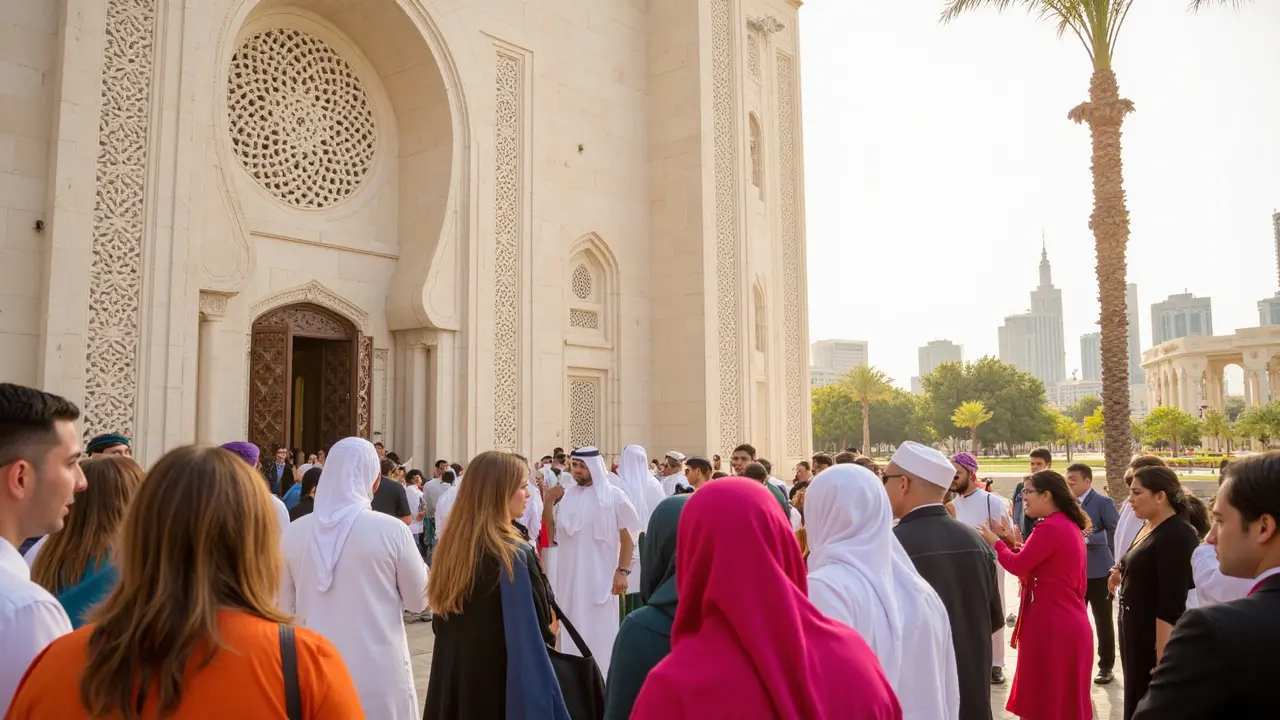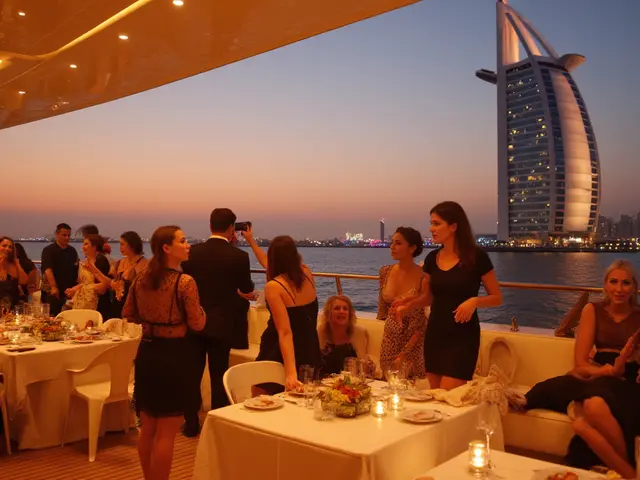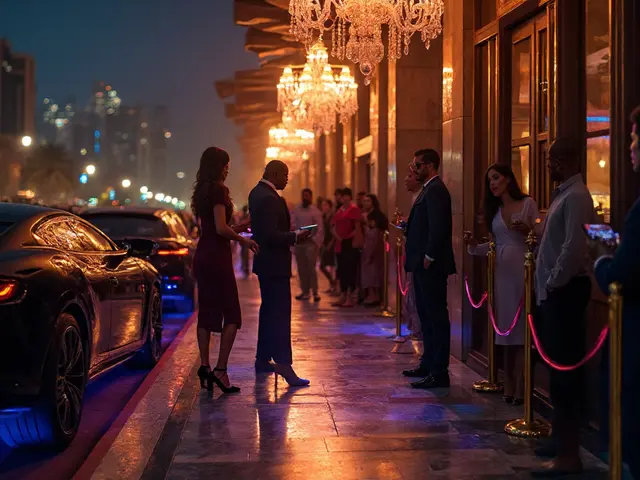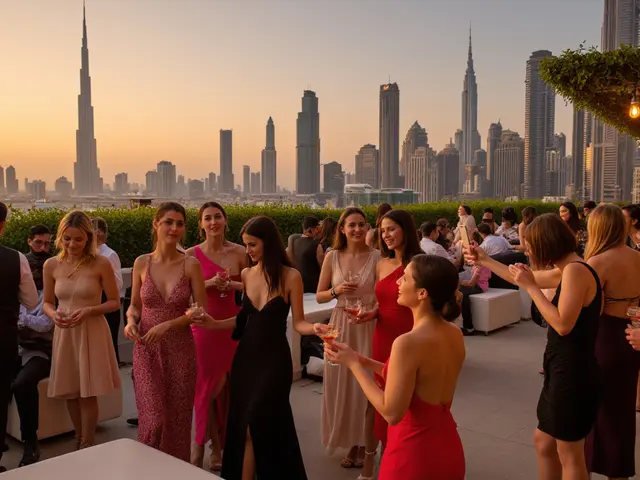
Ever tried walking down Jumeirah Beach Road on a cool Friday morning? Right in the middle of all those glass towers and fancy beach clubs, Jumeirah Mosque pulls you in with its old-school charm—it’s pure Dubai, but not the glitzy part you see in Instagram stories. This place isn’t just another photo stop. It’s one of the only mosques in the city where everyone—including non-Muslims—can actually go in, look around, and ask anything they want.
If you’re thinking of visiting a real Dubai landmark, you can’t just rock up in your shorts and start snapping selfies. There’s a smart way to see Jumeirah Mosque that actually feels welcoming—no awkwardness, no feeling lost. Residents book a visit here for their visiting parents, while expats who’ve just moved to Dubai often start their cultural learning right here. Tourists love it because it’s the opposite of a shopping mall: calm, open, and surprisingly friendly.
Before you go, know that Jumeirah Mosque is run by the folks at the Sheikh Mohammed Centre for Cultural Understanding. That means you get local Emirati guides (often with stories you won’t see online), open Q&A sessions, and plenty of chances to learn why mosque life in Dubai feels different from similar spots elsewhere. Got questions about Ramadan, prayer times, or even the call to prayer echoing across Satwa? This is where you ask them.
- Why Jumeirah Mosque Stands Out in Dubai
- Getting In: Visiting Hours, Dress Code, and Fees
- What Happens During the Guided Tour
- Understanding the Traditions: Culture Close-Up
- Photography, Etiquette, and Common Mistakes
- Nearby Spots: Make a Full Day Out of Your Visit
Why Jumeirah Mosque Stands Out in Dubai
This isn’t just another big building on Dubai’s tourist map. For starters, Jumeirah Mosque is basically the only mosque in Dubai that opens its doors daily to anyone, whether you’re Muslim or not. Most mosques in the UAE are off-limits to non-Muslims, so people craving legit local insights often end up here first.
The mosque’s design is pretty unique, too. Built in the traditional Fatimid style, it’s got sharp carvings and classic minarets, all in creamy white stone that glows at sunset. If you’re into numbers, it can fit about 1,200 worshippers at a time. Inside, you’ll spot Arabic calligraphy, geometric tilework, and chandeliers—none of it feels over the top, but it’s all super photogenic.
| Fact | Details |
|---|---|
| Architectural Style | Fatimid, inspired by mosques in Egypt and Syria |
| Opened | 1979 |
| Capacity | Up to 1,200 people |
| Visiting Days | Saturday to Thursday |
One thing that draws people in is the whole Jumeirah Mosque experience—open Q&As, Arabic coffee and dates, and that “ask anything” approach. The Sheikh Mohammed Centre for Cultural Understanding set up these tours to break down barriers and stereotypes. You’re encouraged to bring your real questions—whether about prayer rituals, Dubai traditions, or even how locals balance faith with working in a hyper-modern city.
Jumeirah Mosque sits right on Jumeirah Beach Road, making it easy to get to if you’re hanging out at La Mer, Mercato Mall, or those stretches of public beach. Unlike a lot of Dubai attractions, there’s no massive security queue or pressure to buy stuff. They just want you to understand what makes this place and the city tick. That’s honestly pretty rare anywhere, not just in the UAE.
Getting In: Visiting Hours, Dress Code, and Fees
First things first, there’s no just wandering in and out. Jumeirah Mosque has a set schedule for non-Muslim visitors. Tours run every day except Friday, usually starting at 10:00 a.m. sharp, so don’t show up late. Friday is reserved for prayers, like most mosques in the UAE. It’s best to get there by 9:30 a.m. so you’ve got time to check in, sip the free Arabic coffee, and maybe chat with the staff before things kick off. No bookings are required, you can just show up, but if you’re going in a group, give them a heads up through the Sheikh Mohammed Centre for Cultural Understanding (SMCCU) website or call ahead.
When it comes to what to wear, Dubai’s famous for being more relaxed than other places, but here, you’re stepping inside a religious space. For guys, long trousers and short- or long-sleeve shirts are fine—just skip the tank tops. Ladies should have their arms, legs, and hair covered. Scarves are handed out at the entrance if you forget to bring one. Don’t stress if you show up in summer clothes—they’ll loan you a traditional abaya or kandura right before the tour, no charge.
The entry fee is straightforward: AED 35 per person, cash or card accepted. Kids under 12 walk in free, which is handy for families. The fee includes the guided tour, drinks, and some traditional snacks at the start. You get much more value here than just walking through alone—real stories, history, and open Q&A are all part of the experience.
| Item | Details |
|---|---|
| Tour days | Saturday – Thursday |
| Start time | 10:00 a.m. |
| Pre-tour arrival | By 9:30 a.m. |
| Entry fee | AED 35 (Adults), Free (Children under 12) |
| Dress code | Modest. Covered arms, legs, and hair (for women). Clothing provided if needed. |
| Booking | Walk-in or pre-arrange for groups via SMCCU |
Keep in mind, free parking stretches along Jumeirah Beach Road, but it fills up fast on weekends. There’s RTA public transport nearby too—just hop on bus 8, get off at the Jumeirah Mosque stop, and you’re right there at the entrance. Want a ride-hailing option? Careem and Uber are fast and know the location.
For privacy and respect, put your phone on silent before entering. You’ll get your chance for photos later. The main thing: show up early, respect the Jumeirah Mosque dress code, pay the small fee, and you’ll get a real window into Emirati life you can’t just scroll online.
What Happens During the Guided Tour
Once you step inside Jumeirah Mosque for the daily guided tour, you’ll notice right away that this isn’t your standard sightseeing routine. The Jumeirah Mosque tour, organized by the Sheikh Mohammed Centre for Cultural Understanding, usually kicks off at 10 a.m. every day except Friday. You don’t need to book in advance—just show up a bit before start time, pay your AED 35 at the door, and you’re good to go. They hand out traditional Emirati snacks and sweet tea before things get formal.
First thing, your guide—sometimes a Dubai resident who’s grown up a few blocks away—will welcome everyone and start by asking your name and where you’re from. There’s none of that distant, museum-guide vibe here. They encourage you to sit up front, take photos, and ask whatever pops in your head.
The tour covers a whole walkthrough of the mosque. You’ll take off your shoes before stepping onto the carpet, and your guide will explain details like why mosques face Mecca, how the prayer times work, and the meaning behind those repetitive Arabic phrases you hear echoing from mosques in Al Satwa district or around Zabeel. If you listen, you get small gems—like why there are clocks on the wall (They show prayer times) or why the ceiling’s pattern is blue (Inspired by Persian designs).
You get a quick intro to wudu—ritual washing—which happens in the ablution area outside. Sometimes, the guide even does a short demo or brings up a volunteer. They also walk you through the steps of prayer, and nobody cares if you don’t know what to do—this isn’t about conversion or pressure, just genuine curiosity.
- Photo-taking is not just allowed—it's encouraged, as long as everyone is respectful.
- Questions range from everyday stuff like fasting in Dubai’s summer to deeper ones about women's roles in Islam. Your guide answers everything without sidestepping.
- You’ll hear stories about Ramadan if you visit close to the holy month, or even get invited to an iftar event if you ask.
The tour wraps up with another round of snacks. Sometimes, you’ll get to linger and chat longer if the group’s not in a rush. If you want, you can buy a booklet on Islamic culture at the end. You’ll leave knowing a lot more about how the mosque fits into day-to-day life in Dubai—and probably with a dozen photos to show off later.

Understanding the Traditions: Culture Close-Up
Jumeirah Mosque isn’t just about impressive arches and carved minarets—it’s an active place of worship. The minute you step through the doors, you’re stepping into a snapshot of real Emirati life. The traditions here aren’t stage shows for tourists. They’re part of daily routine for people living in Dubai.
Before prayers, you’ll notice worshippers washing their hands, face, and feet at the ablution area outside. This isn’t some random ritual; it’s about cleanliness before standing for prayer. Local guides at the mosque will actually show you how it works—and they don’t mind if you ask questions.
During the guided tour, Emirati hosts break down the five daily prayer times, and how life in Dubai kind of turns around these moments. Shops in Deira and Karama might pause at prayer time. Even big malls like Mall of the Emirates have prayer rooms tucked away so staff and shoppers can slip out for a few minutes to pray. Ramadan traditions? They’ll talk about how the city changes—restaurants flip to iftar menus, and Dubai’s roads go really quiet right around sunset when everyone’s breaking fast.
- Guides will show you how Muslims line up shoulder-to-shoulder for prayer, no VIP section—everyone’s equal in the mosque.
- Chances are good you’ll hear a story or two about growing up in Dubai and what makes Eid special (tip: don’t miss Al Seef and Boxpark during those celebrations).
- You can see copies of the Quran on low bookshelves, and the locals might read a short verse in English so everyone gets the meaning.
The best part? You don’t have to know Arabic or follow any religion to take part. The point of these traditions is community. That’s why the Jumeirah Mosque team goes heavy on the Q&A. You’re free to ask about dress code, why women and men pray in separate areas, or even why so many people in Dubai wear kanduras and abayas. This is one of the few spots in town where you get real answers, no sugarcoating.
Photography, Etiquette, and Common Mistakes
Let’s clear up the biggest question most people have when walking into Jumeirah Mosque—can you take pictures inside? The answer is yes, but with a few simple guidelines. You’re welcome to snap photos in the mosque’s courtyard, the main prayer hall, and the arches just outside. Tripods are usually not allowed during regular tours (unless you get special permission), and remember, you can’t take pictures during prayer times or of worshippers praying. That’s not just a mosque rule, but basic UAE courtesy.
Etiquette inside the mosque is pretty straightforward, but some visitors slip up and don’t realize it until a guide gently points it out. Here’s what you definitely want to get right:
- Dress modestly: For women, that means covering your hair, shoulders, and knees. Headscarves are given out at the entrance if you forget yours. Men should leave sleeveless shirts and shorts at home.
- Shoes come off before stepping inside the prayer hall. There’s a rack—just use it and remember which shoes are yours.
- Keep your voice down and your phone on silent. Loud chats, ringtones, and phone calls are a no-go inside the mosque.
- Don’t walk in front of anyone who’s praying, and steer clear of the mihrab (the little niche in the wall that faces Mecca).
Some mistakes repeat so often, the staff have a routine for them:
- Wearing sunglasses or hats inside. Both are better left off as a sign of respect.
- Standing with your back to the mihrab for selfies or group shots. Guides usually remind you—just ask if you’re not sure where to stand for a respectful photo.
- Trying to join the prayer session. Visitors are welcome to observe but not participate unless invited.
Here’s something that surprises a lot of people: around 100,000 visitors toured Jumeirah Mosque in 2024, and about 70% were expats, with guided tours running six days a week except Fridays. Check out this quick table for specific info:
| Tour Days | Tour Timings | Avg. Visitors per Group | Languages Offered |
|---|---|---|---|
| Sat-Thu | 10:00 AM & 2:00 PM | 40-60 | English, Arabic |
If you’re ever unsure, just ask your guide—they’ll be happy to help and actually appreciate questions about proper behavior. Locals and long-timers in Dubai know that little courtesies like these go a long way, and honestly, it makes the whole experience better for everyone.
Nearby Spots: Make a Full Day Out of Your Visit
Once you’ve wrapped up your time inside the Jumeirah Mosque, you’ve got a bunch of places within striking distance that make for a pretty awesome day out in Dubai. No need to trek across the city—some of the area’s best hangouts, cultural spots, and eats are literally minutes away.
First, pop across the street to Etihad Museum. This one’s easy to spot with its striking curved roof, and you’ll want to head inside if you want to get a taste of how the UAE came together back in 1971. Interactive exhibits, real-life documents, and even the old Union House—this is where kids and adults both actually pay attention.
Craving something more laid-back? Jumeirah Beach is a short 5-minute cab hop or a 15-minute walk. Beaches here are public, clean, and come stocked with running tracks, food trucks, and showers. Kite Beach is a local favorite for breakfast, with Salt Burger and PARLOR Café pulling in both tourists and Dubai folks every weekend.
Need coffee? Drop by % Arabica at City Walk or Starbucks Reserve at Jumeirah Beach Road. Want a bite? Local classic Ravi Restaurant in Satwa is legendary for Pakistani food at prices that’ll make your wallet happy. Looking for something fancier? Head to Mercato Shopping Mall—a Venice-inspired center with everything from Spinneys to Paul Bakery, plus an indoor play area for kids.
Here’s a quick look at how far key places are from the mosque and what to expect:
| Spot | Type | Distance (by car) | What to Expect |
|---|---|---|---|
| Etihad Museum | Museum | 2 min | UAE history, interactive exhibits |
| Jumeirah Beach | Beach | 5 min | Public beach, running track |
| Ravi Restaurant | Local Eatery | 7 min | Authentic Pakistani food |
| Mercato Mall | Shopping | 10 min | Shops, cafes, family-friendly |
| Kite Beach | Outdoor/Recreation | 10 min | Food trucks, watersports, views |
If you’re looking for prayer essentials or souvenirs, Al Souq Jumeirah right behind the mosque has basics like prayer mats and local snacks. For real Emirati gifts, check out the Sheikh Mohammed Centre’s small shop inside the mosque—they stock goods made by local artisans.
Planning to go on a Friday? Note that traffic on Jumeirah Beach Road spikes around midday due to Jumu’ah prayers. If you want to avoid the rush, book your visit and brunch a little earlier or later. Paid parking is right by the mosque entrance, but it fills up fast on weekends, so be ready to walk a block or two.





